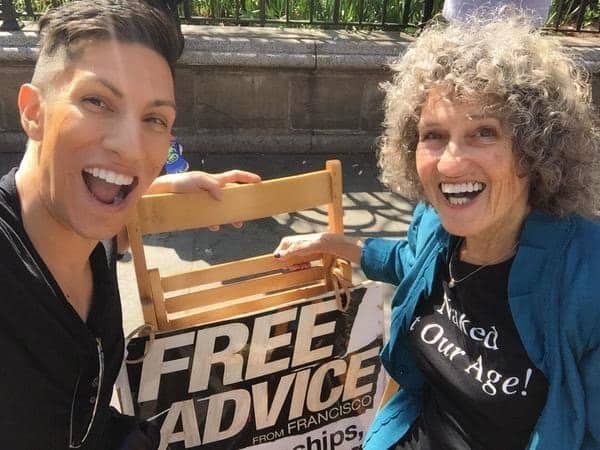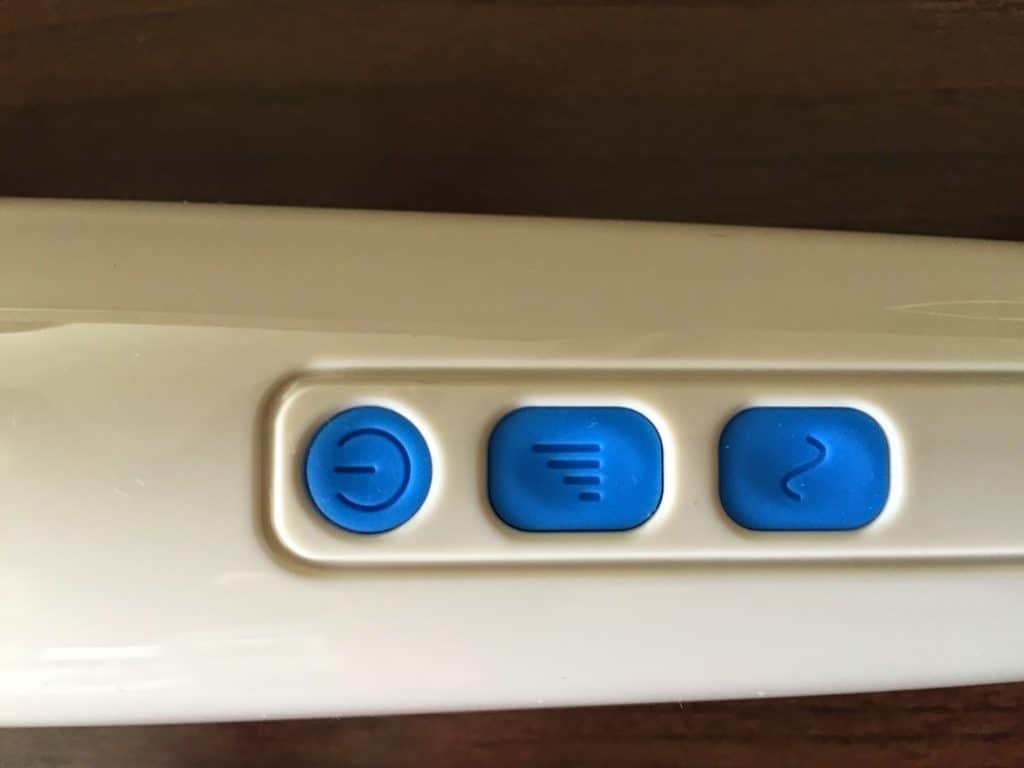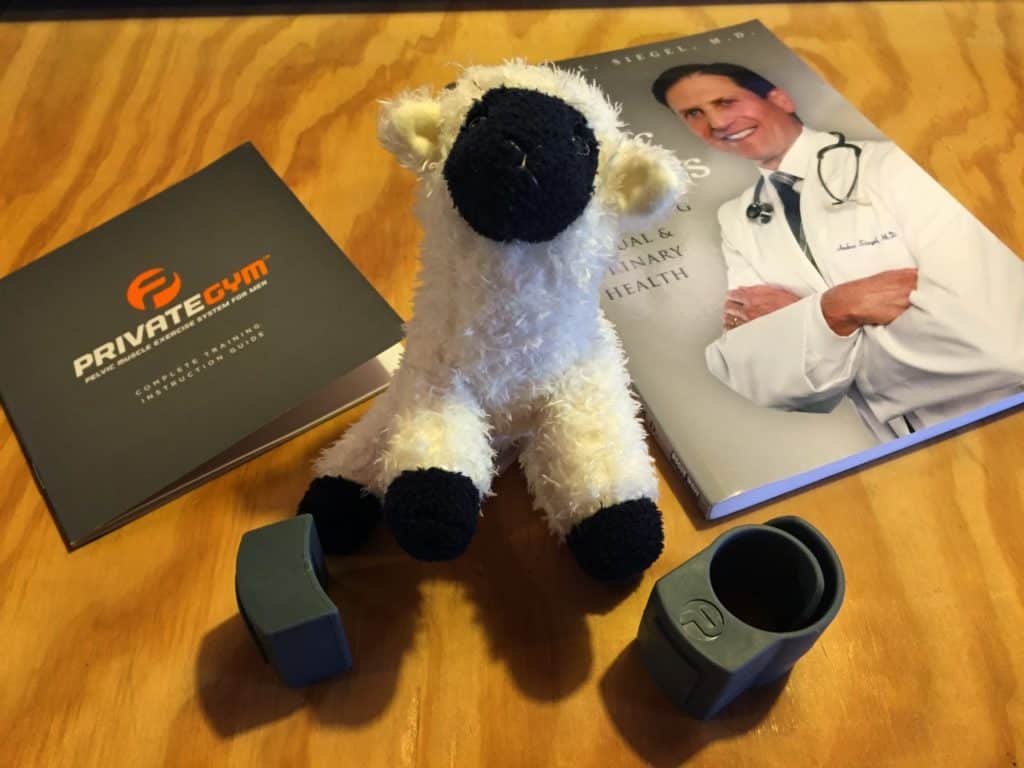#FreeSexAdvice in New York City with Francisco Ramirez
 I had the delightful experience of sharing Francisco Ramirez’s #FreeSexAdvice in Union Square, NYC. If you’re not familiar with Francisco’s events, he sets up two chairs in a park along with a sign offering free advice about sex, relationships, and dating. Then he sits down and waits for people to join him and ask their questions.
I had the delightful experience of sharing Francisco Ramirez’s #FreeSexAdvice in Union Square, NYC. If you’re not familiar with Francisco’s events, he sets up two chairs in a park along with a sign offering free advice about sex, relationships, and dating. Then he sits down and waits for people to join him and ask their questions.
Yesterday — Saturday, May 2, 2015 — he brought a third chair. A chair for me. We had decided to take advantage of my visit to New York to offer park visitors a sex educator duo. We set up and Francisco tweeted that we were ready.
I thought I knew what to expect, but I was surprised and thrilled that people would actually sit down in the chair and, with very little prompting, start confiding their sexual concerns, stories, and questions. They shared confidences that their partners (if they had partners) didn’t even know. We heard these types of stories, among others:
- I love my partner but we don’t live close enough to see each other regularly. I’m cheating when we’re apart, feel guilty about it and keep promising “this is the last time,” but I can’t seem to stop.
- I was brought up in a church that condemns same-sex relationships. I know I’m a lesbian and I want a wife. But I love my religion!
- Will masturbating to x-rated man-woman pornography make me a pedophile? I’ve heard that porn does that.
- I live with a younger man. It was okay at first, but now it’s just blow jobs and giving him money. I don’t leave him because I’m afraid of being lonely.
- I don’t have much trouble finding people for hook-ups, but I’d like a real relationship. Should I be pickier?
Often people talked to us for 15 minutes, getting deeper into their stories, as Francisco and I asked questions to clarify the issues and offered advice. Sometimes the people arrived at revelations and conclusions that they hadn’t expected, and after they left, Francisco and I turned to each other and said, “We really helped someone just now.” It was deeply satisfying to how good information and a new perspective could change people!
Many thanks to Francisco for including me in this great adventure. We’ve already agreed that we’ll do it again next time I’m in New York.
The New, Rechargeable Magic Wand!
2/7/25 update:
I’m updating this 2015 post because the Magic Wand Rechargeable is in the news again for two reasons:
-
Several of us (see comments) are among the 1,000 participants in the Magic Wand Study this month.
-
The New York Times Wirecutter declared the Magic Wand Rechargeable “the best vibrator.” I’m delighted that this article referenced me, Naked at Our Age, and my post “Vibrators for Seniors – especially for first-timers“! (Thank you, Bianca Alba!)
Original review published 4/13/15:
If you read my reviews, you know that I love the Magic Wand. For decades (yes, decades, with a couple of improvements along the way), it has been the King of Vibrators.
Now there’s a new king in town: the Magic Wand Rechargeable. It has everything we loved about the Original Magic Wand (reviewed here) plus 4 new attributes that make it the ideal sex tool for those of us who need really strong vibrations:
- It’s rechargeable! No need to look for an outlet near the bed or get tangled in cords — just charge it ahead of time, and it’s usable cord-free.
- Silicone head! The silicone covering of the head is not only more body-safe than the previous wand, it’s softer, a little cushy, which feels really good.
- Four speeds! Instead of the previous two speeds (high and turbo high), we have four choices. The lowest speed is rumbly and great for warm-up (for most of us), or if you don’t need super-strong, the first two speeds might be all you need. Turbo users can turn it up from level 1 to higher, extra high, or unbelievably high. According to Good Vibrations, here’s a comparison of intensity levels:
- Original Magic Wand: 1- 5000 rpms (vibrations/ minute); 2- 6000 rpms
- Rechargeable Magic Wand: 1- 2,700 rpms; 2- 3,800 rpms; 3- 5,400 rpms; 4- 6,300 rpms
- Patterns. I don’t really care about patterns — just give me strong, steady vibrations, thank you. But for those of you who like to experiment with patterns, there are four of them.
Being so strong, it has to be large to house the motor. Like previous iterations, this Magic Wand is big (13″ long with a tennis-ball sized head) and heavy — caution if you have arthritic wrists. On the other hand, it works so well that you’ll likely reach your goal in a very short time, compared to other sex toys!
The silicone head cover is not removable, so you have to be careful cleaning it — just wipe it clean.
The Magic Wand Rechargeable is priced in line with other rechargeable vibrators and well worth the money. (Please don’t be duped into buying it cheaper on Amazon. The cheap ones may be labeled Magic Wand, but they might not be — they might be knock-offs with inferior materials and design, and just try to get a refund when they overheat or stop working. Don’t risk it, seriously.)
I’m shouting, I’m singing, I’m dancing, I’m loving this new Magic Wand! Thank you, Good Vibrations, for gifting me the Magic Wand Rechargeable in exchange for an honest review.
(Originally published 4/13/15)

Private Gym: Kegels for men — with penis weights!
 I’ve stressed the importance of pelvic floor (AKA Kegel) exercises for both male and female anatomies, but I admit that I haven’t given as much focus to male bodies. Now there’s a complete exercise program for male pelvic muscle training — Private Gym — including weight training for the penis!Stronger pelvic muscles give you more blood flow to the penis, stronger and more rigid erections, better urinary and rectal control, and stronger orgasms and ejaculatory force. Like any other muscles, they respond to strength training. Private Gym offers both a “basic” and a “complete” training program.
I’ve stressed the importance of pelvic floor (AKA Kegel) exercises for both male and female anatomies, but I admit that I haven’t given as much focus to male bodies. Now there’s a complete exercise program for male pelvic muscle training — Private Gym — including weight training for the penis!Stronger pelvic muscles give you more blood flow to the penis, stronger and more rigid erections, better urinary and rectal control, and stronger orgasms and ejaculatory force. Like any other muscles, they respond to strength training. Private Gym offers both a “basic” and a “complete” training program.
Both include a DVD, an instruction manual, and a book, Male Pelvic Fitness: Optimizing Sexual & Urinary Health. The book presents a ton of anatomical and sexual function information, plus cool factoids that you can throw out at a sex-positive dinner party, such as what “phallocarps” are and which animal ejaculates 4-5 gallons of semen.
 This program lets you learn and practice the step-by-stem program with a follow-along DVD. It’s very well done, with clear illustrations and explanations. (I would have preferred it without the background music, though, which I found repetitive and distracting.)
This program lets you learn and practice the step-by-stem program with a follow-along DVD. It’s very well done, with clear illustrations and explanations. (I would have preferred it without the background music, though, which I found repetitive and distracting.)
The difference between the programs? The basic gives you a 4-week, progressive, step-by-step program. It’s good, especially for pelvic floor training beginners.
However, I recommend the complete program, which includes the basic plus additional exercises and 4 weeks of resistance training, which you do with the included weights. (Only the complete program includes the weights.)
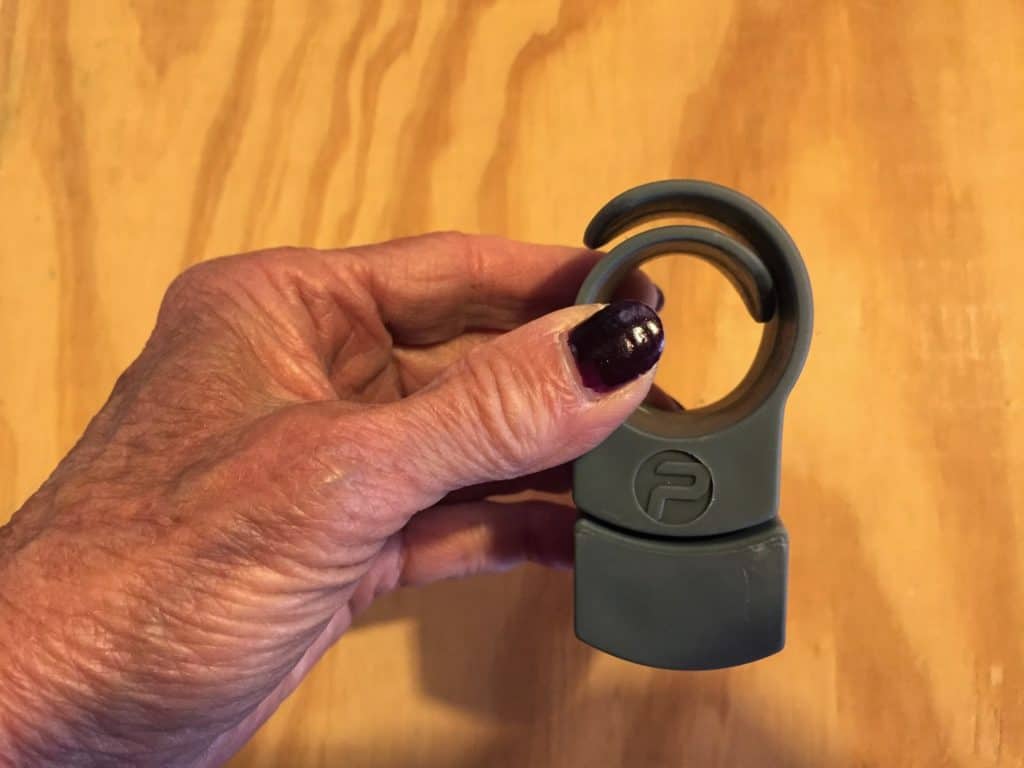 Yes, weights. You put the weighted ring on your penis and perform the squeeze-release exercises (both slow and rapid) along with the DVD. As your pelvic muscles strengthen, you can add the additional weight which attaches magnetically. You’ll need a rigid erection (with or without medication) in order to use the weights. (You don’t need a rigid erection for the basic program.)
Yes, weights. You put the weighted ring on your penis and perform the squeeze-release exercises (both slow and rapid) along with the DVD. As your pelvic muscles strengthen, you can add the additional weight which attaches magnetically. You’ll need a rigid erection (with or without medication) in order to use the weights. (You don’t need a rigid erection for the basic program.)
I know, penis weights may seem like a gimmick. But they’re not, I assure you. Don’t take my word for it — here’s what my 57-year-old male tester had to say:
It’s great. It takes you through the things you can do to build up those muscles. This program with your choice of a male or female voice tells you exactly how, when, and for how long, and gives you a signal that makes it so much easier. It’s like the reason you hire a fitness trainer – sure, you can lift weights on your own, but a trainer helps you.
The book is great because it talks about why you’re doing this and gives background information, in easy to understand terms.
When you get more advanced, you can use the weight system. The weights are comfortable, easy to slip on, and they work.
The whole program is well thought out, and very easy and comfortable to use. It’s a great system. I think it would benefit just about anybody.
I was having trouble with getting erections. Using this program, my erections became as firm on their own as when I was using Viagra!
Thank you, Private Gym, for sending me this program for my tester and me to review. This is a powerful tool, especially the complete program, because the weights can make a huge difference.
Womanizer Clitoral Stimulator: Clitoral suction!
 2021 update: This first version of the Womanizer is no longer available (mine should go in a museum), but later versions without the garish decoration and thumb-stabbing jewel are sure to delight! I’m keeping this review (after removing the dead links) because it’s fun to see this original version. Check out my newer Womanizer reviews.
2021 update: This first version of the Womanizer is no longer available (mine should go in a museum), but later versions without the garish decoration and thumb-stabbing jewel are sure to delight! I’m keeping this review (after removing the dead links) because it’s fun to see this original version. Check out my newer Womanizer reviews.
The Womanizer is a sex toy that sucks your clitoris — and that’s a rock-your-world sensation!
Let’s get this part out of the way first, though — this is the ugliest, tackiest looking sex toy that has ever graced my nightstand. It looks like a design by sixth graders assigned to figure out what a girly ear thermometer might look like. It’s a garish shade of fuschia, with animal print decoration. The “+” button is a fake jewel.
 And the name — Womanizer. Seriously?
And the name — Womanizer. Seriously?
And yet… it’s wonderful! This magical sex toy isn’t quite a vibrator, although it does vibrate. The essence of its power is suction. Position it so that the silicone attachment surrounds the nub of the clitoris, turn it on, and waves of gentle suction tug around the clitoris. It’s an exquisite feeling. And yes, the rhythmic suction does lead to orgasm. Oh yes, it does.
This might be a deal breaker for you: it’s very expensive, about $200. (Yes, it should be less ugly for that price.) But if the idea of having your clitoris gently and rhythmically sucked for as long as you want makes you squirm, save up for it. It’s worth it.
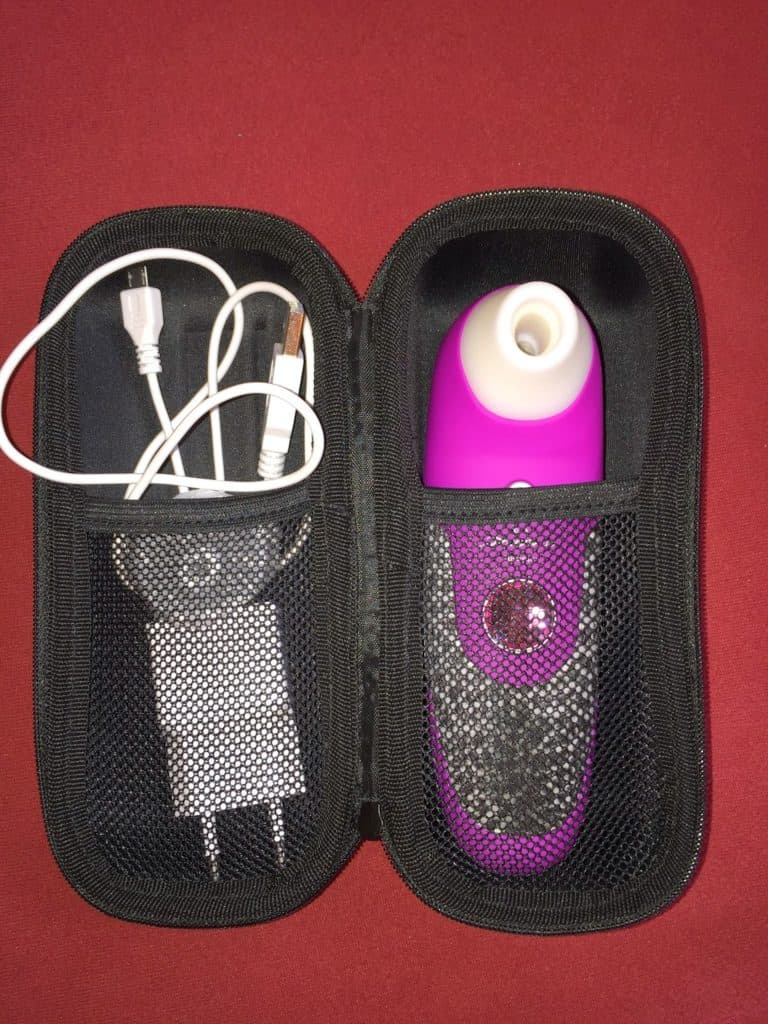 The Womanizer charges via USB, so there are no cords to wrestle with while you’re using it. It comes in a hard case in an unattractive shade of bubble gum pink.
The Womanizer charges via USB, so there are no cords to wrestle with while you’re using it. It comes in a hard case in an unattractive shade of bubble gum pink.
 The silicone part that nibbles and sucks your clitoris comes off for easy cleaning, and there’s an extra in the case in case you need it. One caveat — the manual says that you can use silicone lubricant, but you cannot. The tip, which is the part you need lubed, is silicone, so use water-based lubricant with it.
The silicone part that nibbles and sucks your clitoris comes off for easy cleaning, and there’s an extra in the case in case you need it. One caveat — the manual says that you can use silicone lubricant, but you cannot. The tip, which is the part you need lubed, is silicone, so use water-based lubricant with it.
Bottom line — Give me that clitoral suction sensation — I love it. I can get past ugly by closing my eyes.
